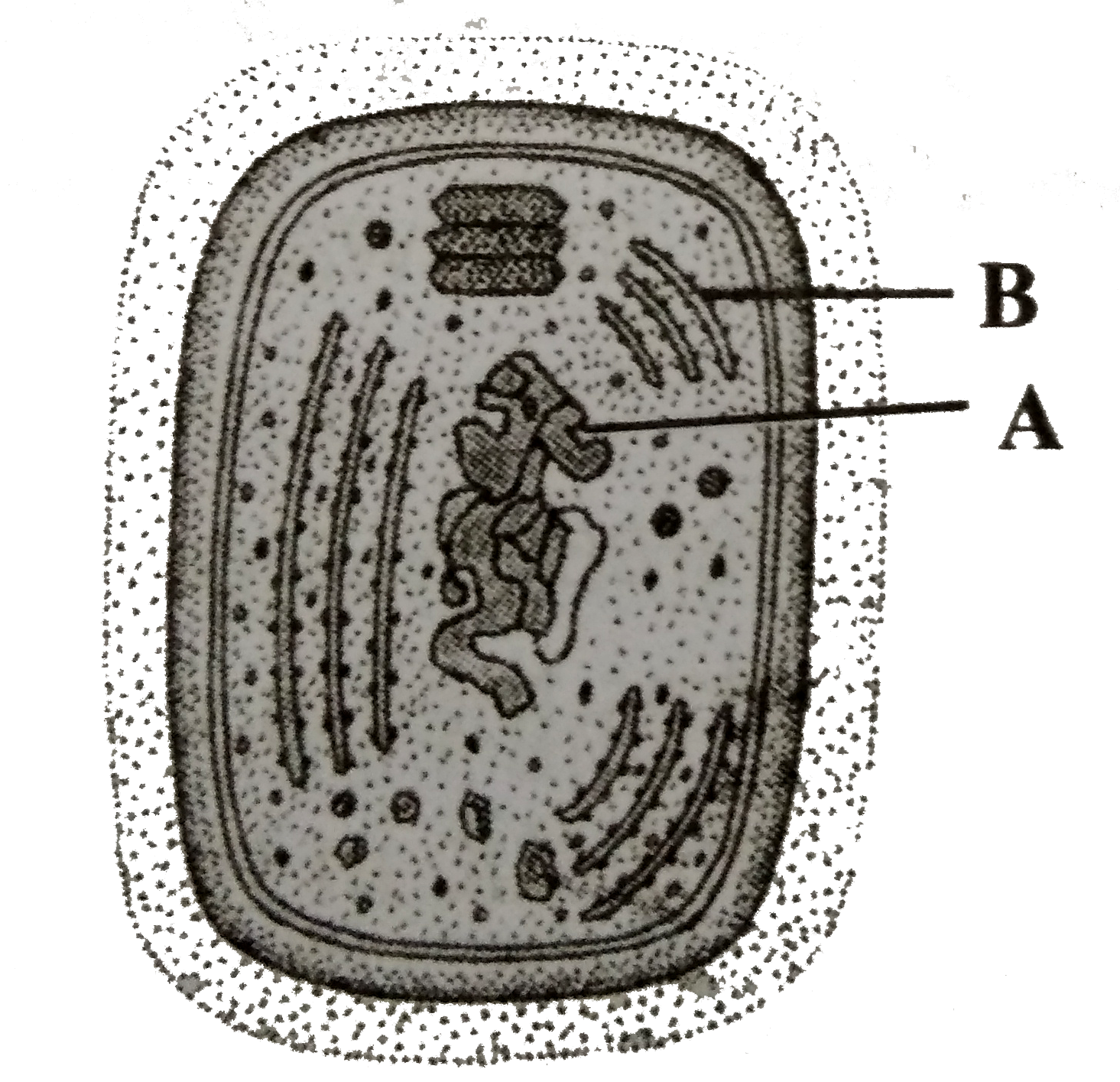Different cells have different sizes. Arrange the following cells in an ascending of their size and select the correct option.
(i) Mycoplasma (ii) Ostrich egg
(iii) Human RBCs (iv) Bacteria
a) (i)→(iv)→(iii)→(ii)
b) (i)→(iii)→(iv)→(ii)
c) (ii)→(i)→(iii)→(iv)
d) (iii)→(ii)→(i)→(iv)
The correct Answer is:A
To arrange the given cells in ascending order of their size, we need to first identify the size of each cell type:
1. Mycoplasma: This is known to be one of the smallest cells, with a size ranging from approximately 0.1 to 0.5 micrometers.
2. Bacteria: Bacterial cells typically measure around 3 to 5 micrometers in length.
3. Human RBCs (Red Blood Cells): Human RBCs have a diameter of about 6 to 8 micrometers.
4. Ostrich Egg: The ostrich egg is the largest cell, which can be several centimeters in size (specifically, around 15 centimeters in diameter).
Now, we can arrange these cells in ascending order based on their sizes:
- Mycoplasma (0.1 to 0.5 micrometers)
- Bacteria (3 to 5 micrometers)
- Human RBCs (6 to 8 micrometers)
- Ostrich Egg (largest cell, several centimeters)
Thus, the ascending order of the cells by size is:
1. Mycoplasma (smallest)
2. Bacteria
3. Human RBCs
4. Ostrich Egg (largest)
The correct sequence is 1 (Mycoplasma), 4 (Bacteria), 3 (Human RBCs), 2 (Ostrich Egg).
Final Answer:
1, 4, 3, 2
2. Bacteria: Bacterial cells typically measure around 3 to 5 micrometers in length.
- Bacteria (3 to 5 micrometers)
- Human RBCs (6 to 8 micrometers)
- Ostrich Egg (largest cell, several centimeters)
2. Bacteria
3. Human RBCs
4. Ostrich Egg (largest)
1, 4, 3, 2
Topper's Solved these Questions
- BOOK - NCERT FINGERTPS ENGLISHCHAPTER - CELL - THE UNIT OF LIFEEXERCISE - Assertion & Reason20videos
CELL - THE UNIT OF LIFE
- BOOK - NCERT FINGERTPS ENGLISHCHAPTER - CELL - THE UNIT OF LIFEEXERCISE - Cell - The Unit Of Life159videos
CELL - THE UNIT OF LIFE
- BOOK - NCERT FINGERTPS ENGLISHCHAPTER - CELL - THE UNIT OF LIFEEXERCISE - HOTS5videos
CELL - THE UNIT OF LIFE
- BOOK - NCERT FINGERTPS ENGLISHCHAPTER - BREATHING AND EXCHANGE OF GASESEXERCISE - Breathing And Exchange Of Gases140videos
BREATHING AND EXCHANGE OF GASES
- BOOK - NCERT FINGERTPS ENGLISHCHAPTER - CELL CYCLE AND CELL DIVISIONEXERCISE - Cell Cycle And Cell Division130videos
CELL CYCLE AND CELL DIVISION
Similar Questions
Different cells have different sizes. Arrange the following cells in an ascending order of their size. Choose the correct option among the followings
i. Mycoplasma, ii. Ostrich eggs
iii. Human RBC, iv. BacteriaView SolutionDifferent cells have different sizes. Arrange the following cells in an ascending order of their size. Choose the correct option among the followings
i. Mycoplasma, ii. Ostrich eggs
iii. Human RBC, iv. BacteriaView Solution
Knowledge Check
- Question 1 - Select One
Some important events that take place during fertilisation are given below. Arrange the events in a proper sequence and select the correct option.
(i). Cortical reaction
(ii). Sperm entry
(iii). Karyogamy
(iv). Acrosomal reactionA(iv)→(i)→(ii)→(iii)B(i)→(ii)→(iii)→(iv)C(iv)→(ii)→(i)→(iii)D(ii)→(i)→(iii)→(iv) - Question 2 - Select One
Following table summarises the differences between normal cells and cancerous cells. Pick up the wrong difference (s) and select the select the correct option.
 A(i) and (iii)B(iii) and (iv)C(iii) onlyD(ii) only
A(i) and (iii)B(iii) and (iv)C(iii) onlyD(ii) only - Question 3 - Select One
Given figure represents the ultrastructure of a typical cyanobacterial cell. Identify the different parts and select the correct option for A and B
 AAB(a)Naked DNAThylakoidBAB(b)ThylakoidNaked DNACAB(c)DNA+HistonesThylakoidDAB(d)DNA+Histone80S ribosomes
AAB(a)Naked DNAThylakoidBAB(b)ThylakoidNaked DNACAB(c)DNA+HistonesThylakoidDAB(d)DNA+Histone80S ribosomes
Arrange the following cells in an ascending order based on their size.
i) Mycoplasma ii) Ostrich egg
iii) Human RBC iv) BacteriumView SolutionMatch the column I,II,and III .Select the correct option :
 View Solution
View SolutionIdentify the structure indicated by labels (i),(ii),(iii) and (iv) and select the correct option.
 View Solution
View SolutionSelect the correct option of haploid cells from the following groups :
View SolutionRead the following and select the correct option :
A. Carnivora is a/an (i) that involves (ii) and Canidae.
B. Petunia and (iii). belongs to Family (iv)View Solution
